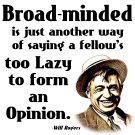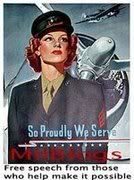Racist! (Updated)
You gotta see this!
Pajamas TV/Sonja Schmidt: "What's it Take to Be a Racist?"
Sept. 29, 2009
~
Democrats' shrieks of "racist!" this week reached psychotic levels. Let's not sum up who made up the chorus, but former antisemetic President Jimmy Carter was the temporary apotheosis.
Charges of racism have very little to do with reality and serve the purpose of what in another era was 'fascist'. It's a stopper and a slightly more grown-up version of a temper tantrum.
The big winner in this offensive is, yes ... racism.
Big Hollywood: "Real Racism: Lessons in ‘To Kill a Mockingbird’", by Andrea Shea King.jpg) My name is Bob Ewell. We’re all Bob Ewells if you check with the Left and their media mouthpieces.
My name is Bob Ewell. We’re all Bob Ewells if you check with the Left and their media mouthpieces.
Who is Bob Ewell? Well, if you’ve ever watched the movie To Kill a Mockingbird, you’d know that Ewell is the racist character who destroyed the life of an innocent man.
To Kill A Mockingbird is a classic American film, based on Harper Lee’s novel of life in 1936 Alabama and racial injustice that resided there.
The importance of this movie is that the cries of racism today, most recently by former president Jimmy Carter — which are not true — damage and set back the real cases of racism.
This movie shows us real racism, which thankfully, we don’t see much of today. (...)
The contrast is glaring between this made up political racism and the real deal — the real Bob Ewells of the world. Like Television.com offers it for free online. (...) >>> Here's the theme by Elmer Bernstein, which is exquisite!
Here's the theme by Elmer Bernstein, which is exquisite!
IMdB page.
Slide show.
Wiki.
And for heaven's sake! Stop the racist! rage!!!
Another update (Oct. 15, 2009)
Red State: "The Totally Real And Not Fake Stupid Quotes Shenaniganza!", by Caleb Howe
That’s what the MSM had to say in comments about Rush Limbaugh’s recent bid to purchase the St. Louis Rams. According to some guy I overheard at the mall, White House Press Secretary Robert Gibbs suggested that Limbaugh owning the Rams “is exactly the same as slavery, but fatter.” And then there’s what Helen Thomas probably said, “Rush to what window? With a ram? Where’s my sweater?”
So in honor of the controversy, I’ve compiled a top ten list of some completely ridiculous but totally true and not fake quotes of famous people who are not (or so they claim) Rush Limbaugh. These are, like, so the true. For really real. Really. No … really.
THE TOTALLY REAL AND NOT FAKE QUOTES SHENANIGANZA TOP TEN (...) >>>

 With biting wit and amusing personal anecdotes,
With biting wit and amusing personal anecdotes,  People who lived through the 1953 North Sea flood were given a special viewing Sunday of
People who lived through the 1953 North Sea flood were given a special viewing Sunday of 

 Of all the images hurled forth by the last presidential election, none will live longer than Shepard Fairey’s poster of a red, white, and blue Barack Obama, gazing significantly into the distance, resting atop the single word Hope. It had already been embossed into the national consciousness as the definitive image of Obama even before it was acquired by the National Portrait Gallery and appeared as the cover of Time’s “Person of the Year” issue. His poignant mien seemed to encapsulate all his personality and promise, an expression that was at once solemn, pensive, yearning, and ever so slightly sorrowful. With good reason the critic Peter Schjeldahl termed it “the most efficacious American political illustration since ‘Uncle Sam Wants You.’”
Of all the images hurled forth by the last presidential election, none will live longer than Shepard Fairey’s poster of a red, white, and blue Barack Obama, gazing significantly into the distance, resting atop the single word Hope. It had already been embossed into the national consciousness as the definitive image of Obama even before it was acquired by the National Portrait Gallery and appeared as the cover of Time’s “Person of the Year” issue. His poignant mien seemed to encapsulate all his personality and promise, an expression that was at once solemn, pensive, yearning, and ever so slightly sorrowful. With good reason the critic Peter Schjeldahl termed it “the most efficacious American political illustration since ‘Uncle Sam Wants You.’”










